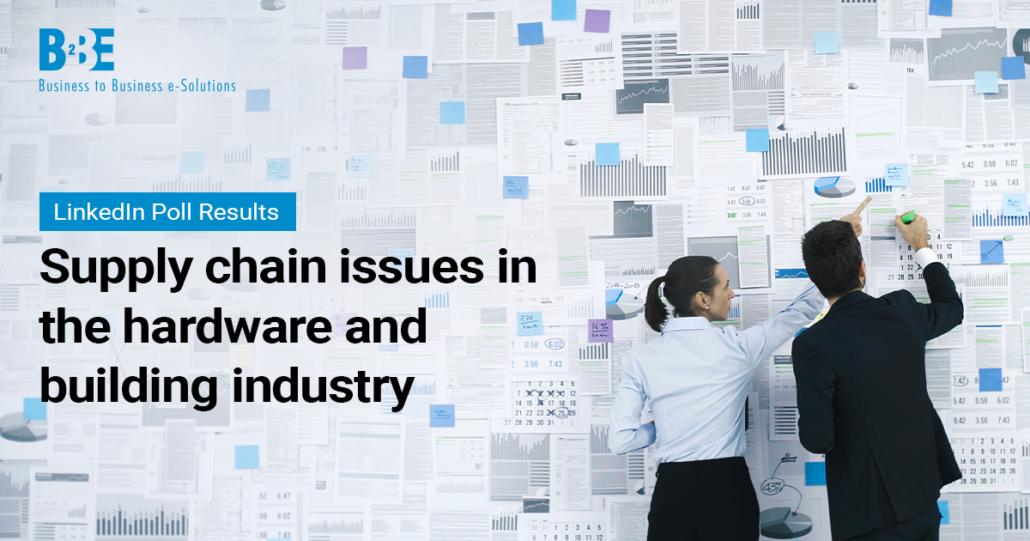Global supply chains have been pushed to the max the last two years, highlighting the shortcomings of a complicated system that impacts everything from computer chips to toilet paper. These disruptions don’t just affect daily life—they echo across the global economy. This has been clear in the hardware and building industry, as businesses operating in this space have been hit not only with material shortages, but labour shortages, price increases and demand they’re not able to meet.
Poll results
In our most recent LinkedIn poll, we asked our social media followers their thoughts on what they thought the biggest supply chain issue was in the hardware & building industry in 2022.
Hardware & building industry supply chain issues: what we found
Material shortages
62% of respondents highlighted material shortages as their biggest hardware & building supply chain issue this year.
The department for Business and Energy highlighted a month-on-month price rise throughout 2021 on material highlighting increased costs due to short supply and increased demand. The Timber Trade Federation (TTF) shared how they are now receiving record-breaking timber imports; however, supplies are still likely to be under strain throughout 2022 and beyond.
Another area of shortages, is that of HGV drivers to deliver materials. With take-up low for the government’s 10,500 visas for overseas lorry drivers, jobs are still being delayed as a result.
Net zero targets
Net zero targets were 19% of respondents biggest hardware & building issue for supply chain in 2022.
From 1st October 2021 it became mandatory for all companies bidding for government contracts worth more than five million a year to commit to achieving net zero emissions by 2050. Under new rules in-scope organisations need to produce a carbon reduction plan detailing where their emissions come from and what environmental management measurers they have in place. This includes reporting scope 3 emissions such as business travel, employee commuting and transportation meaning that for businesses that want to continue applying for government contracts they need to put complex procedures in place to manage this reporting, or have high project management costs for someone to do it for them.
Increased consumer demand
14% highlighted increased consumer demand as the biggest hardware & building supply chain issue.
The 2020 pandemic lockdowns meant people were spending longer at home. This created not only an increase demand in home construction, but also in changing office blocks into new homes for example. This increase in change meant construction firms often have more demand than they have capability for.
Skills shortages
Finally, 5% checked skills shortages as their biggest issue in the hardware & building industry.
The skills shortage has been a growing concern within construction due to workers reaching retirement age and not enough people entering the industry to replace them. This coupled with the drop in EU workers by 42% means the industry has been struggling to match work force with the increase in purchase demand. The skills shortage makes it even more critical that efforts to diversify the industry and attract a wider range of people to construction roles pay off. It also reinforces the importance of looking after existing staff and contractors.
More information
B2BE’s experience in the supply chain sector allows our customers to build, expand and adapt successfully, enabling greater effectiveness. To engage with B2BE and offer feedback on what matters most to you and your business, make sure to follow us on LinkedIn and across social media. You can also vote in our latest LinkedIn poll. If you’d like to discuss your future supply chain strategy, including your hardware & building supply chain, get in touch with us.
